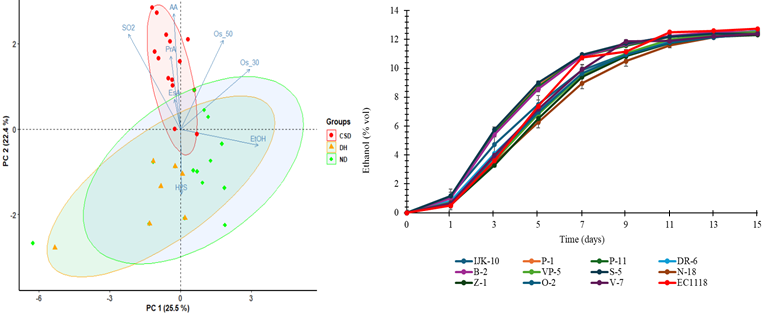The scientific paper “Unlocking the potential of indigenous Saccharomyces cerevisiae from Maraština grapes for use as starter cultures in the winemaking process”, published in the journal Applied Food Research (Elsevier, Q1, IF: 6.2), was funded as part of the INOMED-2I project (09-207/1-23), which is supported by the European Union’s NextGenerationEU fund.
In this latest study, 117 indigenous Saccharomyces cerevisiae strains were isolated and thoroughly analyzed from spontaneous fermentations of Maraština grape must obtained from three subregions of Dalmatia.

Why is this important?
In the world of winemaking, the concept of microbial terroir is gaining recognition – the idea that native microbiota, as well as soil and climate, contribute to a wine’s identity. These indigenous yeast strains therefore have great potential as starter cultures for wine fermentation.
💡 Key findings of the study:
- Strains from Central and Southern Dalmatia (CSD) showed high tolerance to sulfur dioxide and high sugar levels, as well as lower production of undesirable compounds such as H₂S and acetic acid.
- Strains from Northern Dalmatia (ND) were more resistant to higher alcohol concentrations, but showed lower aromatic potential.
- Eleven of the most promising isolates were selected for further testing – all successfully completed fermentation within 15 days.
- Compared to the commercial strain EC 1118, the indigenous strains showed a more complex aroma profile, mainly due to increased ester production (associated with fruity and floral notes).
This research confirms that indigenous yeast strains reflect the unique characteristics of their home region and their use can support the production of authentic and distinctive wines. Such an approach promotes sustainability, biodiversity and the preservation of regional wine identity.
🔗 More details available at the link:
https://www.sciencedirect.com/science/article/pii/S2772502225004500
#IndigenousYeasts #Terroir #SaccharomycesCerevisiae #INOMED2I #Science
